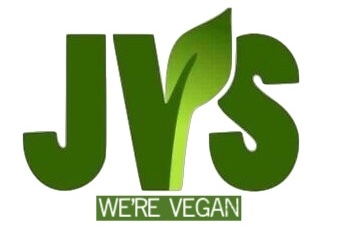A new study published by Oxford University found that eating a vegan diet could be the “single biggest way” to reduce your environmental impact on earth. Researchers at the University of Oxford found that cutting meat and dairy products from your diet could reduce an individual’s carbon footprint from food by up to 73 per cent.
While we are hearing an increasing amount about the health risks associated with eating meat, and there is growing awareness of animal suffering on factory farms, the connection between meat and the environment is not so widely known.
The Livestock’s Long Shadow report by the United Nations Food and Agriculture Organization (FAO) stated that animal agriculture is “one of the top two or three most significant contributors to the most serious environmental problems, at every scale from local to global.”
Below we detail the some of the key environmental problems of animal agriculture; greenhouse gases, water usage and ammonia.
Rising demand for animal products is also causing; widespread pollution, deforestation, land degradation, and species extinction. To find out more about this, click here.
Greenhouse gases
Greenhouse gases are atmospheric gases that trap infrared radiation emitted from the earth. Some greenhouse gases occur naturally and are essential to the Earth by providing a “blanket” for marine and terrestrial organisms. Without them, temperatures on earth would be unbearably cold. However, if their concentrations become too high, they can contribute to global warming and could do so to such an extent that they make the earth unbearably hot and lead to rises in sea levels and increases in the number of hurricanes and tropical storms. Nature has maintained greenhouse gases at a tolerable level for billions of years – the temperature of the Earth has remained fairly constant – but human activities have been changing the concentration of these gases since the start of the industrial revolution, in the 1850s.
Some greenhouse gases such as carbon dioxide occur naturally and enter the atmosphere through both natural processes and through human activities. Other greenhouse gases are created and emitted solely through human activities.
The principal greenhouse gases that enter the atmosphere because of human activities are carbon dioxide (CO2), methane (CH4) nitrous oxide (NO) and fluorinated gases. The human activities which cause the release of these gases include burning coal and petrol (fossil fuels), a variety of industrial processes (e.g. air conditioning and commercial refrigeration), cutting down forests, and animal agriculture (both through animal waste and through some of the methods involved in rearing animals in an industrialised factory farm system).
CO2 for example is produced when rainforests are destroyed to make way for grazing cattle or to grow crops for feeding to farmed animals. According to Greenpeace, one hectare of Amazon rainforest is lost to cattle ranchers every 18 seconds. This is the equivalent of six football pitches of ancient forest destroyed every minute to create room for grazing cattle.
Methane is caused by the flatulence of cows, sheep and goats, and nitrous oxide rises off slurry (manure) pits, predominantly on pig farms, or is the by-product of the production of fertilisers. Although we hear a lot about carbon dioxide and ways of reducing our “carbon footprint”, both methane and nitrous oxide are more powerful greenhouse gases. Methane is 21 times more powerful than carbon dioxide and remains in the atmosphere for up to 12 years, and nitrous oxide is 310 times more powerful than carbon dioxide and remains in the atmosphere for up to 114 years.
The FAO estimates that livestock production is responsible for up to 18 per cent of global greenhouse gas emissions, while more recent estimates put the figure as high as 51 per cent.
Water
As well as emitting greenhouse gases into the atmosphere, animal agriculture also requires huge amounts of water. It takes approximately 2400 litres to produce just one (150 g) beef burger. In comparison, 150 g of tomatoes require 28 litres of water and 150 g of potatoes require 38 litres of water in production.
While it may appear that water supplies are limitless, we should consider that we are all part of a connected system which is fragile and threatened by water shortages. Only 2.8 per cent of the Earth’s water is fresh water, concentrated in lakes, streams, glaciers, ice caps and atmospheric water vapour. During droughts, the supply of fresh water is reduced. And as the world’s population increases, water consumption increases. A further concern is that with Western diets spreading to the rest of the world, even nations in Africa and the Middle East which have large amounts of desert land are pouring what little water they have into meat production. Conserving water is vital to ensure that a sufficient supply of water, that is safe to use, is available for ourselves and future generations.
Ammonia
Livestock farming – in particular intensive chicken farms – also generates huge amounts of ammonia (NH3) which contributes considerably to acid rain. The Department for Environment, Food and Rural Affairs (DEFRA) estimates that livestock farming produces 67% of the UK ’s total ammonia emissions.
Unless something is done and we change our habits, we will cause so much damage to the Earth that the effect on future generations will be devastating. Going vegan is a simple and easy, yet effect, way to play your part in preventing this from happening.
Your diet could change the world.
